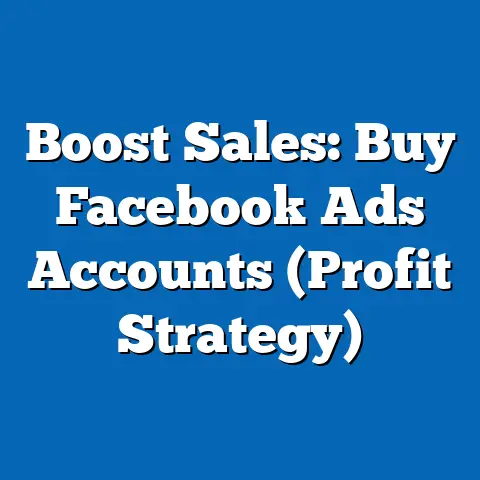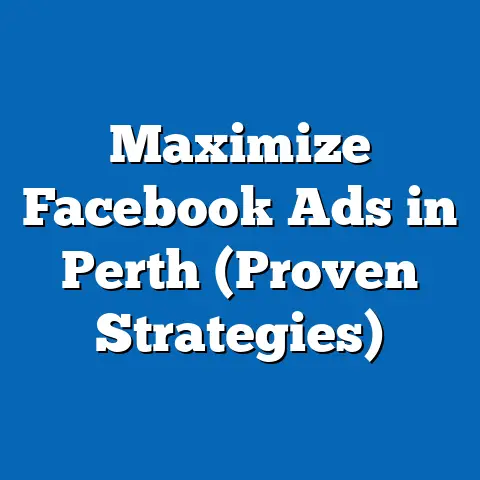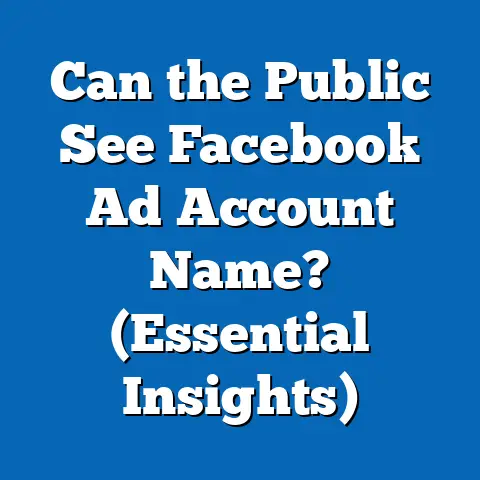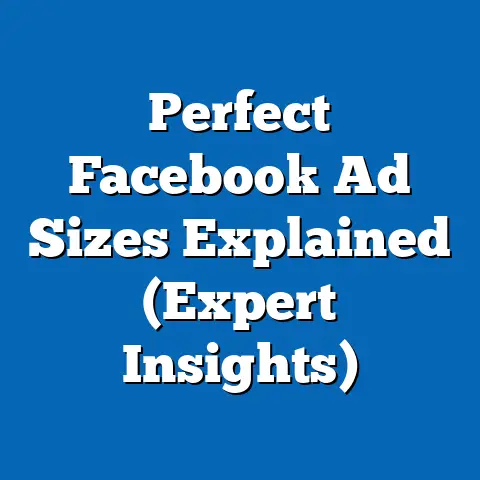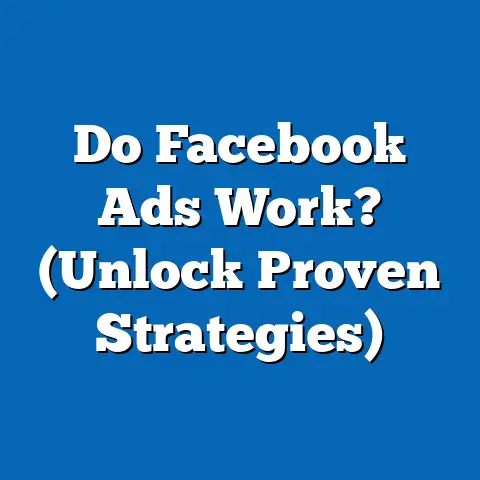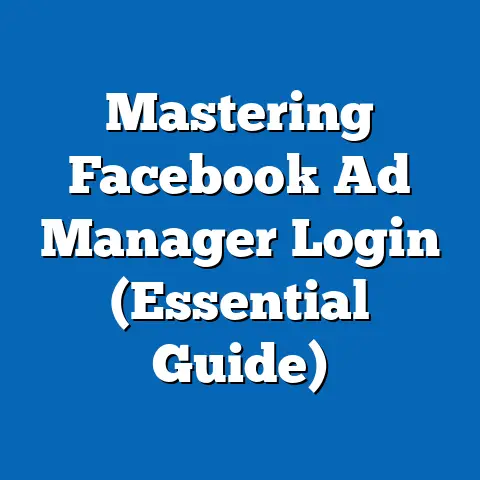Transform Facebook Ads for Jewelry Sales (Expert Tips)
The world of jewelry is one of timeless elegance, personal significance, and often, substantial investment. As much as we cherish the sparkle of a diamond or the gleam of gold, the way we discover and purchase these treasures has drastically changed. Today, the digital marketplace reigns supreme, and for jewelry businesses, mastering Facebook advertising is no longer optional – it’s essential.
I’ve spent years helping businesses, including several jewelry retailers, navigate the complex world of Facebook Ads. I’ve seen firsthand how a well-crafted campaign can transform a small boutique into a thriving online store. But I’ve also witnessed the frustration and wasted ad spend that comes from poorly executed strategies. That’s why I’ve put together this guide – to provide you with expert tips that will help you transform your Facebook ads for jewelry sales, ensuring you capture the attention of your ideal customers and drive meaningful results.
Before we dive in, let’s acknowledge a critical aspect: Safety First. In today’s digital landscape, data privacy and security are paramount. According to recent statistics, data breaches are on the rise, and consumers are increasingly concerned about their online shopping security. Building trust is non-negotiable. I always advise my clients to be transparent about their data handling practices and prioritize security measures. Remember, a successful campaign is not just about driving sales; it’s about building lasting relationships built on trust and respect for your customer’s privacy.
Now, let’s unlock the secrets to jewelry advertising success on Facebook!
Section 1: Understanding Your Target Audience
Before you even think about crafting an ad, you need to know who you’re talking to. Imagine trying to sell a delicate pearl necklace to someone who only wears bold, statement pieces – you’re wasting your time and money. Understanding your target audience is the bedrock of any successful advertising campaign, and it’s especially crucial in the jewelry market, which is incredibly diverse.
Why is it important?
- Relevance: Ads that resonate with your audience are more likely to grab their attention and drive engagement.
- Efficiency: Targeted advertising ensures you’re spending your budget on reaching people who are actually interested in your products.
- Higher Conversion Rates: When you speak directly to your target audience’s needs and desires, you’re more likely to convert them into paying customers.
Defining Your Jewelry Buyer Personas
The first step is to identify the different types of jewelry buyers you want to target. Here are a few common categories:
- Engagement Ring Seekers: This group is usually young, in love, and looking for the perfect symbol of their commitment. They’re likely researching diamonds, settings, and ethical sourcing.
- Fashion Jewelry Enthusiasts: These buyers are trend-conscious and love to accessorize with the latest styles. They’re often looking for affordable pieces that can elevate their outfits.
- Gift Givers: These individuals are looking for the perfect present for a loved one, whether it’s a birthday, anniversary, or special occasion. They appreciate quality and thoughtfulness.
- Self-Expressionists: These buyers see jewelry as a way to express their individuality and personal style. They’re drawn to unique, handcrafted pieces that tell a story.
- Investment Buyers: These individuals view jewelry, particularly precious gems and metals, as an investment asset. They are interested in the long-term value and potential appreciation of their purchases.
Leveraging Facebook Audience Insights
Once you’ve identified your target audience categories, it’s time to dive into Facebook Audience Insights. This powerful tool provides a wealth of data about your potential customers, including:
- Demographics: Age, gender, location, education level, relationship status, and job title.
- Interests: Hobbies, passions, and topics they’re interested in on Facebook.
- Behaviors: Purchase history, online activity, and device usage.
- Page Likes: The Facebook pages they follow, which can reveal their interests and brand preferences.
How to Use Audience Insights:
- Access Audience Insights: Go to your Facebook Ads Manager and select “Audience Insights” from the menu.
- Choose Your Audience: You can start with a broad audience (e.g., everyone on Facebook) or a custom audience (e.g., your existing customers).
- Explore the Data: Use the filters to narrow down your audience based on demographics, interests, and behaviors.
- Analyze the Results: Pay attention to the top categories, page likes, and demographics to gain a deeper understanding of your target audience.
Real-World Example: Alex & Co.
I worked with a local jewelry store, Alex & Co., that specialized in handcrafted, bohemian-style jewelry. Initially, their Facebook ads were targeting a broad audience, and their results were underwhelming.
After using Audience Insights, we discovered that their ideal customer was a woman aged 25-45, interested in yoga, travel, and sustainable fashion. They also liked pages related to ethical brands and artisan crafts.
By tailoring their ads to this specific audience, Alex & Co. saw a dramatic increase in engagement and sales. Their ads featured imagery of their jewelry being worn in natural settings, and their ad copy highlighted the ethical sourcing of their materials.
Key Takeaways:
- Define your target audience categories: Identify the different types of jewelry buyers you want to reach.
- Use Facebook Audience Insights: Gather data on demographics, interests, and behaviors to understand your target audience better.
- Tailor your ads: Create ads that resonate with your target audience’s needs and desires.
Next Steps:
- Brainstorm your ideal customer profiles.
- Spend time exploring Facebook Audience Insights.
- Start creating ads that speak directly to your target audience.
Section 2: Crafting Compelling Ad Copy
Once you know who you’re talking to, you need to craft ad copy that captures their attention and persuades them to take action. In the world of jewelry, where emotions and aspirations run high, your ad copy needs to be more than just informative – it needs to be captivating.
The Fundamentals of Persuasive Ad Copy
- Know Your Audience: Remember what you learned in Section 1! Tailor your language and tone to resonate with your target audience.
- Highlight the Benefits: Focus on the benefits of owning your jewelry, not just the features. What will it make the wearer feel? How will it enhance their life?
- Use Emotional Triggers: Tap into emotions like love, celebration, self-expression, and aspiration.
- Create a Sense of Urgency: Encourage immediate action by using phrases like “Limited Time Offer” or “Shop Now Before It’s Gone!”
- Include a Strong Call-to-Action: Tell people exactly what you want them to do, such as “Shop Now,” “Learn More,” or “Get a Free Quote.”
Emotional Triggers That Work for Jewelry
- Love: Perfect for engagement rings, wedding bands, and anniversary gifts.
- Celebration: Ideal for birthday gifts, graduation presents, and other special occasions.
- Self-Expression: Appeals to buyers who see jewelry as a way to express their individuality and personal style.
- Aspiration: Targets buyers who want to elevate their status or achieve a certain image.
- Nostalgia: Capitalizes on sentimental value and the desire to preserve memories.
Examples of Successful Ad Copy
Let’s look at some examples of ad copy that effectively uses emotional triggers:
- Engagement Ring: “Say ‘Yes’ to Forever. Find the perfect ring to symbolize your everlasting love.”
- Fashion Jewelry: “Elevate Your Style. Discover the latest trends in fashion jewelry and express your unique personality.”
- Gift for Mom: “Show Her How Much You Care. Find the perfect gift to celebrate the most important woman in your life.”
- Luxury Watch: “Invest in Timeless Elegance. Experience the prestige of owning a handcrafted luxury watch.”
Tips for Writing Effective Ad Copy
- Keep it Concise: People have short attention spans, so get straight to the point.
- Use Strong Verbs: Choose verbs that are active and engaging, such as “Discover,” “Explore,” and “Indulge.”
- Highlight USPs: Emphasize what makes your jewelry unique, whether it’s the quality of the materials, the craftsmanship, or the design.
- Use Numbers and Statistics: If you have impressive data, use it to build credibility. For example, “Handcrafted with over 100 years of experience.”
- Proofread Carefully: Errors in your ad copy can damage your credibility.
A/B Testing Your Ad Copy
The best way to determine what ad copy resonates with your audience is to A/B test different versions. Try experimenting with different headlines, body text, and calls-to-action to see which ones perform best.
Key Takeaways:
- Know your audience: Tailor your ad copy to resonate with their needs and desires.
- Use emotional triggers: Tap into emotions like love, celebration, and self-expression.
- Highlight the benefits: Focus on what your jewelry will do for the wearer.
- Include a strong call-to-action: Tell people exactly what you want them to do.
- A/B test your ad copy: Experiment with different versions to see what performs best.
Next Steps:
- Brainstorm different ad copy variations for your target audience.
- Identify the emotional triggers that will resonate with your audience.
- Start A/B testing your ad copy to optimize your results.
Section 3: Visual Storytelling Through Imagery
In the visually driven world of social media, your imagery is often the first (and sometimes only) thing that captures a potential customer’s attention. When it comes to jewelry, high-quality visuals are absolutely essential. After all, you’re selling beauty, craftsmanship, and emotion – and that needs to be conveyed through stunning images.
Why High-Quality Visuals Matter
- First Impressions: Your visuals are the first thing people see, and they can make or break your ad.
- Showcase Beauty: High-quality images showcase the beauty and detail of your jewelry.
- Build Trust: Professional-looking visuals build trust and credibility with potential customers.
- Drive Engagement: Compelling visuals are more likely to grab attention and drive engagement.
- Increase Conversions: When people can see the beauty and quality of your jewelry, they’re more likely to make a purchase.
Types of Imagery That Work Well
- Lifestyle Shots: Show your jewelry being worn in real-life settings, showcasing how it can enhance someone’s style and lifestyle.
- Close-Ups: Capture the intricate details and craftsmanship of your jewelry.
- Product Shots: Showcase your jewelry against a clean background, highlighting its features and design.
- Videos: Use videos to showcase the sparkle, movement, and versatility of your jewelry.
- User-Generated Content: Feature photos and videos of your customers wearing your jewelry, building social proof and authenticity.
Technical Tips for Jewelry Photography
- Lighting: Use soft, natural light to showcase the beauty and sparkle of your jewelry. Avoid harsh direct light, which can create glare and shadows.
- Backgrounds: Choose clean, simple backgrounds that don’t distract from the jewelry. White, gray, or neutral colors work well.
- Angles: Experiment with different angles to capture the best features of your jewelry. Try shooting from above, from the side, and at eye level.
- Focus: Make sure your jewelry is in sharp focus, and the background is slightly blurred.
- Editing: Use photo editing software to enhance the colors, brightness, and contrast of your images.
Storytelling Through Visuals
Beyond just showcasing your jewelry, your visuals should tell a story. Think about the emotions and aspirations you want to evoke, and create imagery that reflects those feelings.
For example, if you’re selling engagement rings, you could create a series of photos that tell the story of a couple’s journey, from their first date to their proposal. If you’re selling fashion jewelry, you could create images that showcase how your pieces can elevate someone’s style and confidence.
Real-World Example: Sparkle & Shine
Sparkle & Shine, an online jewelry retailer, struggled to generate leads with their Facebook Ads. Their photography was amateur and didn’t capture the elegance of their pieces. After I convinced them to invest in professional photography, the results were astounding.
Their ads now featured lifestyle shots of models wearing their jewelry in glamorous settings, and close-ups that showcased the intricate details of their designs. As a result, their click-through rates increased by 200%, and their conversion rates doubled.
Key Takeaways:
- Invest in high-quality visuals: Your imagery is the first thing people see, so make sure it’s stunning.
- Use a variety of imagery: Experiment with different types of shots to showcase your jewelry in the best light.
- Tell a story: Create visuals that evoke emotions and aspirations.
- Use professional photography: If possible, hire a professional photographer to capture your jewelry in the best light.
Next Steps:
- Evaluate your current jewelry photography.
- Experiment with different types of imagery.
- Consider hiring a professional photographer.
- Start telling stories through your visuals.
Section 4: Targeting Options on Facebook
You’ve got stunning visuals and compelling ad copy, but if you’re showing them to the wrong people, it’s all for naught. Facebook’s powerful targeting options allow you to laser-focus your ads on the people who are most likely to be interested in your jewelry.
The Power of Precise Targeting
- Reach the Right People: Targeting ensures your ads are seen by people who are actually interested in your products.
- Increase Relevance: Targeted ads are more relevant to your audience, which leads to higher engagement and conversion rates.
- Optimize Your Budget: By targeting the right people, you can maximize your ad spend and get the best return on investment.
Facebook’s Targeting Options
- Demographics: Target people based on age, gender, location, education level, relationship status, and job title.
- Interests: Target people based on their interests, hobbies, and the pages they like on Facebook.
- Behaviors: Target people based on their purchase history, online activity, and device usage.
- Custom Audiences: Create custom audiences based on your existing customer data, website visitors, or email list.
- Lookalike Audiences: Create lookalike audiences to reach new potential customers who are similar to your existing ones.
Retargeting: Re-Engage Interested Customers
Retargeting is a powerful strategy that allows you to show ads to people who have previously interacted with your brand, such as visiting your website or viewing your products.
Benefits of Retargeting:
- Increased Brand Awareness: Retargeting keeps your brand top-of-mind for potential customers.
- Higher Conversion Rates: People who have already shown interest in your products are more likely to make a purchase.
- Personalized Messaging: You can tailor your retargeting ads to show specific products that people have viewed.
Creating Lookalike Audiences
Lookalike audiences allow you to reach new potential customers who are similar to your existing ones. Facebook analyzes the characteristics of your existing customers and finds people who share those same traits.
Tips for Creating Effective Lookalike Audiences:
- Use a High-Quality Source Audience: The more accurate and representative your source audience is, the better your lookalike audience will be.
- Experiment with Different Audience Sizes: You can choose to create a lookalike audience that is 1-10% of the total population in your target country. Smaller audiences are more closely matched to your source audience, while larger audiences have more reach.
- Test Different Lookalike Audiences: Create multiple lookalike audiences based on different source audiences (e.g., website visitors, email list, past purchasers) to see which ones perform best.
Real-World Example: The Gemstone Gallery
The Gemstone Gallery, a high-end jewelry store, wanted to expand their reach beyond their local market. They created a lookalike audience based on their existing customer list, targeting people who were similar to their current customers in terms of demographics, interests, and behaviors.
Their lookalike audience campaign generated a significant increase in website traffic and online sales, allowing them to reach a new audience of potential customers who were highly likely to be interested in their jewelry.
Key Takeaways:
- Use Facebook’s targeting options: Laser-focus your ads on the people who are most likely to be interested in your jewelry.
- Implement retargeting: Re-engage potential customers who have previously interacted with your brand.
- Create lookalike audiences: Reach new potential customers who are similar to your existing ones.
Next Steps:
- Identify your ideal customer profiles.
- Explore Facebook’s targeting options.
- Set up retargeting campaigns.
- Create lookalike audiences.
Section 5: Budgeting and Bidding Strategies
Now that you know who you’re targeting and what you’re showing them, it’s time to talk about money. Setting a budget and choosing the right bidding strategy are crucial for maximizing your ROI and ensuring your ads are seen by the right people at the right time.
The Importance of Budgeting
- Control Your Spending: A budget ensures you don’t overspend on your Facebook ads.
- Maximize Your ROI: A well-planned budget allows you to optimize your campaigns for the best possible return on investment.
- Test and Learn: A budget allows you to experiment with different targeting options, ad creatives, and bidding strategies without breaking the bank.
Types of Budgets
- Daily Budget: The average amount you’re willing to spend per day on your ads.
- Lifetime Budget: The total amount you’re willing to spend on your ads over a specific period.
Factors to Consider When Setting Your Budget
- Your Business Goals: What are you trying to achieve with your Facebook ads? Are you trying to increase brand awareness, drive website traffic, or generate sales?
- Your Target Audience: How large is your target audience? The larger your audience, the more you’ll need to spend to reach them.
- Your Industry: How competitive is the jewelry market on Facebook? The more competitive the market, the more you’ll need to spend to stand out.
- Your Ad Quality: How engaging and relevant are your ads? High-quality ads will generate more engagement and conversions, allowing you to get more for your money.
Bidding Strategies
Facebook offers a variety of bidding strategies to help you achieve your advertising goals.
- Cost Per Click (CPC): You pay each time someone clicks on your ad. This is a good option if you’re trying to drive website traffic.
- Cost Per Impression (CPM): You pay for every 1,000 times your ad is shown. This is a good option if you’re trying to increase brand awareness.
- Cost Per Acquisition (CPA): You pay only when someone takes a desired action, such as making a purchase or signing up for a newsletter. This is a good option if you’re trying to generate leads or sales.
- Value Optimization: Facebook automatically optimizes your bids to get the most value for your ad spend. This is a good option if you’re not sure which bidding strategy to choose.
Tips for Budget Management
- Start Small: Begin with a small budget and gradually increase it as you see results.
- Monitor Your Ad Spend: Keep a close eye on your ad spend to make sure you’re not overspending.
- Optimize Your Campaigns: Regularly review your campaign performance and make adjustments to your targeting, ad creatives, and bidding strategies to improve your results.
- Use Budget Rules: Set up budget rules to automatically pause your campaigns if they’re not performing well or if they’re exceeding your budget.
Real-World Example: Elegant Gems
Elegant Gems, an online jewelry store, was struggling to get a positive ROI on their Facebook ads. They were spending a lot of money, but they weren’t generating enough sales to justify their ad spend.
After analyzing their campaign performance, I discovered that they were using a CPM bidding strategy, which was driving a lot of impressions but not a lot of clicks or conversions.
I recommended that they switch to a CPC bidding strategy and focus on optimizing their ad creatives and targeting options to increase their click-through rates and conversion rates. As a result, their ROI improved dramatically, and they were able to generate a significant increase in sales.
Key Takeaways:
- Set a budget: Determine how much you’re willing to spend on your Facebook ads.
- Choose the right bidding strategy: Select a bidding strategy that aligns with your business goals.
- Monitor your ad spend: Keep a close eye on your ad spend to make sure you’re not overspending.
- Optimize your campaigns: Regularly review your campaign performance and make adjustments to improve your results.
Next Steps:
- Determine your business goals.
- Set a budget for your Facebook ads.
- Choose a bidding strategy.
- Monitor your ad spend.
- Optimize your campaigns.
Section 6: Analyzing Performance and Iteration
Running Facebook ads is not a “set it and forget it” activity. It’s an ongoing process of tracking your performance, analyzing your results, and making adjustments to optimize your campaigns. This is where the real magic happens – turning data into actionable insights that drive meaningful growth.
Why Tracking Performance Matters
- Measure Your ROI: Tracking your performance allows you to see how much money you’re making for every dollar you spend on ads.
- Identify What’s Working: Analyzing your results helps you identify which targeting options, ad creatives, and bidding strategies are performing best.
- Optimize Your Campaigns: By tracking your performance, you can make data-driven decisions to improve your results.
- Avoid Wasting Money: Monitoring your performance allows you to quickly identify and stop campaigns that are not performing well.
Key Performance Metrics to Track
- Click-Through Rate (CTR): The percentage of people who click on your ad after seeing it. A high CTR indicates that your ad is relevant and engaging to your target audience.
- Conversion Rate: The percentage of people who take a desired action, such as making a purchase or signing up for a newsletter, after clicking on your ad. A high conversion rate indicates that your website or landing page is effectively converting visitors into customers.
- Cost Per Click (CPC): The amount you pay for each click on your ad. A low CPC indicates that you’re targeting the right people and your ad is relevant to them.
- Cost Per Acquisition (CPA): The amount you pay for each desired action, such as a purchase or sign-up. A low CPA indicates that you’re effectively generating leads or sales with your ads.
- Return on Ad Spend (ROAS): The amount of revenue you generate for every dollar you spend on ads. A high ROAS indicates that your ads are generating a positive return on investment.
Tools for Analyzing Facebook Ad Performance
- Facebook Ads Manager: Facebook’s built-in analytics tool provides a wealth of data about your ad performance, including impressions, clicks, conversions, and cost per result.
- Google Analytics: A web analytics tool that allows you to track website traffic, user behavior, and conversion rates. You can use Google Analytics to see how your Facebook ads are driving traffic to your website and how that traffic is converting into sales.
- Third-Party Analytics Tools: There are a variety of third-party analytics tools that can provide more advanced insights into your Facebook ad performance. These tools often offer features such as A/B testing, attribution modeling, and cohort analysis.
A/B Testing: The Key to Optimization
A/B testing is a powerful technique that allows you to test different versions of your ads to see which ones perform best.
How to A/B Test:
- Create Two Versions of Your Ad: Change one element of your ad, such as the headline, image, or call-to-action.
- Run Both Ads Simultaneously: Show both versions of your ad to your target audience at the same time.
- Track the Results: Monitor the performance of both ads and see which one generates the best results.
- Implement the Winning Version: Replace the losing version of your ad with the winning version.
- Repeat the Process: Continue A/B testing different elements of your ad to optimize your performance over time.
Real-World Example: Dazzling Diamonds
Dazzling Diamonds, an online jewelry store, was struggling to improve their conversion rates on their Facebook ads. They were generating a lot of traffic to their website, but not a lot of that traffic was converting into sales.
I recommended that they start A/B testing different versions of their landing pages to see which ones were most effective at converting visitors into customers. They tested different headlines, images, and calls-to-action.
After several rounds of A/B testing, they were able to identify a landing page design that significantly improved their conversion rates. As a result, their sales increased dramatically.
Key Takeaways:
- Track your performance: Monitor your key performance metrics to see how your ads are performing.
- Analyze your results: Identify what’s working and what’s not working in your campaigns.
- Use A/B testing: Test different versions of your ads to see which ones perform best.
- Iterate and optimize: Make data-driven decisions to improve your results over time.
Next Steps:
- Set up tracking for your key performance metrics.
- Start analyzing your ad performance data.
- Begin A/B testing different elements of your ads.
- Continuously iterate and optimize your campaigns.
Conclusion
Transforming your Facebook ads for jewelry sales is not a one-time fix but a continuous journey. By understanding your audience, crafting compelling ad copy, using stunning visuals, targeting the right people, setting a budget, and analyzing your performance, you can unlock the full potential of Facebook advertising and drive meaningful results for your jewelry business.
Remember, the key to success is to be patient, persistent, and data-driven. Don’t be afraid to experiment with different strategies and tactics, and always be willing to learn and adapt.
Most importantly, remember to prioritize data privacy and security. Build trust with your potential customers by being transparent about your data handling practices and adhering to the highest standards of security.
Now, it’s time to take action. Implement the expert tips I’ve shared in this guide and start transforming your Facebook ads for jewelry sales today!

